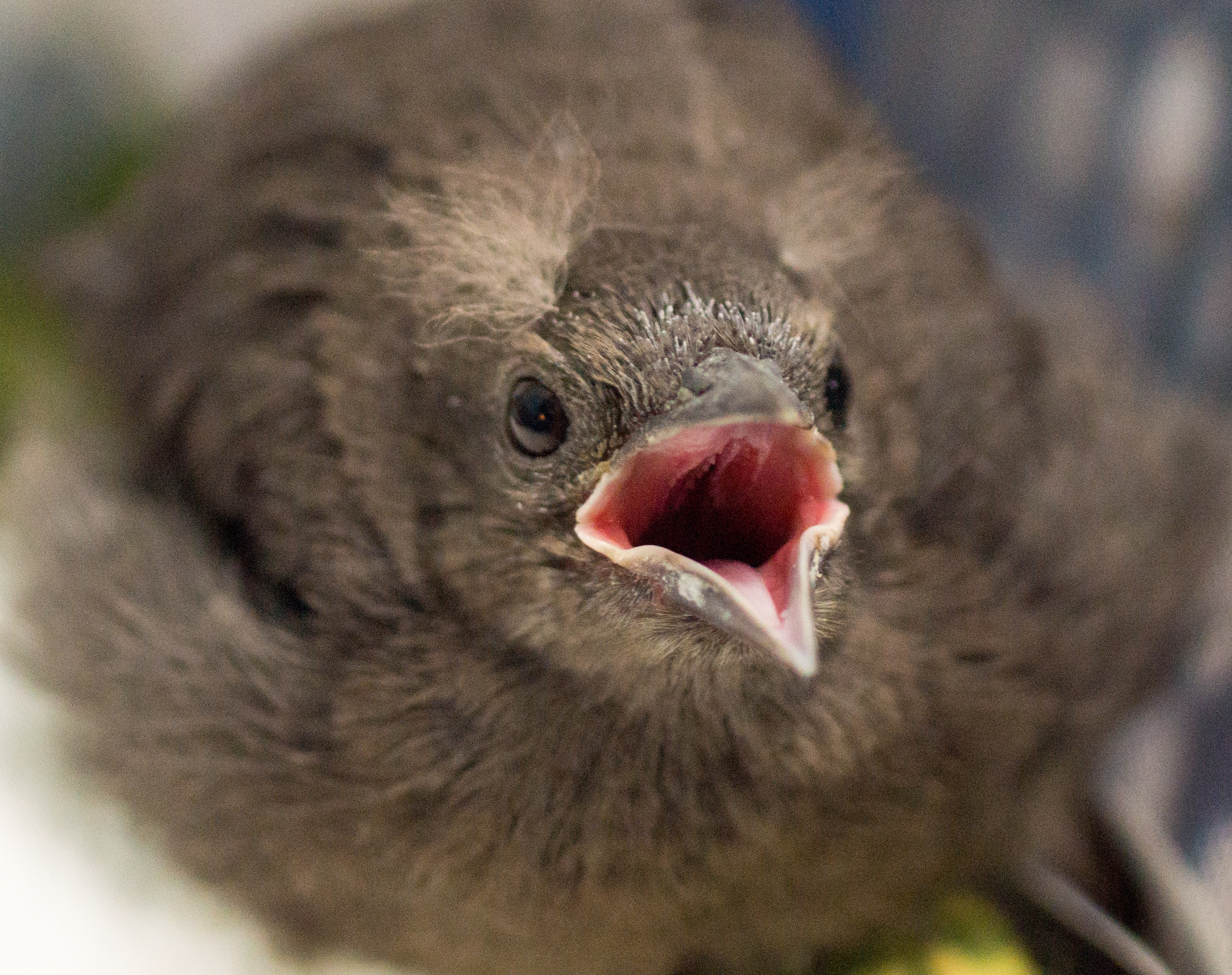Living With Animals: Over Rescue
Ken White, Board President, California Wildlife Center

Fledgling California Towhee
Photo by Kim Barker
We are nearing the first day of Spring when, to mangle Tennyson’s lovely words, a young humaniac’s fancy turns lightly to thoughts of rescuing baby birds. Say what..?
Spring, the season of rebirth, and we’re already receiving calls from kind-intentioned people who’ve found baby birds, and baby squirrels, out of the nest but apparently unable to care for themselves. Yes, it makes sense to worry but, no, scooping babies up and rushing to our wildlife rehab center is not necessarily the best thing. In fact, potentially it’s “over rescuing.”
Hard as it is, sometimes (even often) the best thing for these babies is to be left alone.
Babies which are almost ready to fly (or squirrels to scurry) often flap and fall. That may place them at risk, but it is not necessarily The End. Often mothers will continue to protect and feed babies on the ground below nests, warding off potential predators (assuming they’re a type mom can handle) and encourage them to take those first flaps (or, for squirrels, first hops).
The cliché that mom will reject babies handled by smelly humans is untrue. If the nest is located where it’s safe to return the babies, do so. Mom will not object.
Common sense has to prevail, requiring your eyes and brain for each specific situation. If the area is heavily trafficked by noisy children, dogs or free roaming cats, then the odds shift radically. But if this is a quiet corner of the yard, and your cats are indoor-only animals (as they should be, please!), then hands-off is probably the best option. Uncertain? You can always call us (310-458-9453, select option 2) to help you make that assessment.
We are here to help. Injured and orphaned native wild animals can be brought to California Wildlife Center. Last year we helped 4,072 native wildlife. But we’re here to help mom, not replace her.
